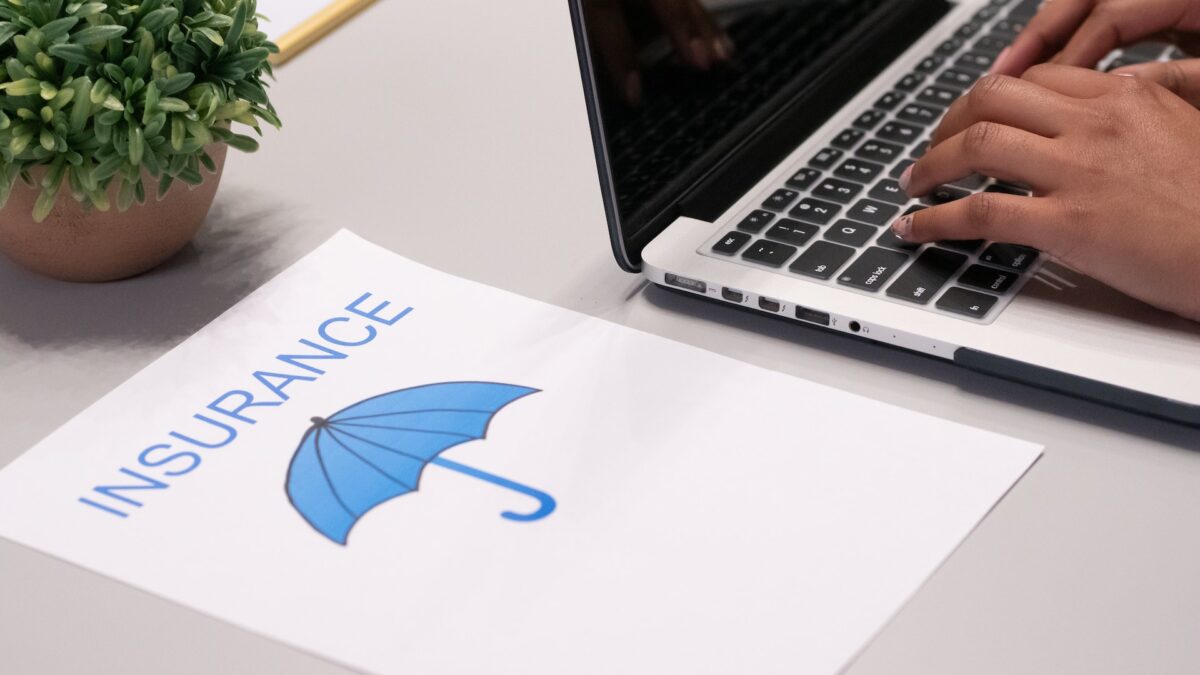
Key Financial Milestones You Should Be Hitting in Your 20s, 30s, 40s, 50s, 60s, and Beyond
April 20, 2023
Stock Options vs. RSUs: What’s the Difference?
May 22, 2023In today’s complex financial landscape, having the right insurance coverage is vital to shield your hard-earned assets from events that could jeopardize your financial future. But how do you know how much insurance is enough?
In this article, we’ll help you answer this question by exploring four types of insurance—life, disability, umbrella, and identity theft—and the coverage they provide. By understanding the potential benefits (and costs) of these policies, you can determine the amount of coverage that makes sense for you.
#1: Life Insurance
Life insurance pays out a lump sum death benefit if the insured individual dies while the policy is active. In general, there are two types of policies: term and permanent.
Term life remains active for a set period, typically five, 10, 20, or 30 years, so long as you pay your premiums. Meanwhile, permanent life remains active throughout your lifetime and accumulates cash value over time.
When Should You Consider Life Insurance?
Typically, people buy life insurance to provide financially for their family in the event of their untimely death. The proceeds can then cover funeral costs and unpaid medical bills, as well as mortgage payments, education costs, and other daily living expenses.
However, life insurance can also be beneficial if your net worth is high enough to trigger estate taxes. Many wealthy people purchase life insurance so their beneficiaries can cover this tax without dipping into their inheritance. (In 2023, the value of your estate must exceed $12.92 million to trigger the federal estate tax.)
Lastly, if you own a business, you may also purchase life insurance to cover operating costs or outstanding debts if you pass away prematurely. Alternatively, if you have more than one child but only plan to pass the business on to one of them, you can use life insurance to provide a cash inheritance of equal value for the others.
How Much Does It Cost?
In general, permanent life insurance is more expensive than term life, given that it covers you indefinitely. The type of policy and coverage amount you select also affect your costs.
From there, age tends to be the primary determinant of cost. For a 40-year-old buying a 20-year, $500,000 term life policy—the most common term length and amount sold—the average cost is $26/month, according to data from Quotacy.
How Much Life Insurance Do You Need?
The amount of life insurance coverage you need depends on several factors.
For providers, this may be enough to cover your funeral costs and your family’s living expenses until your children reach a certain age. On the other hand, business owners may want to take out enough life insurance to cover their debts and payroll until a successor takes over.
There are a multitude of online calculators you can use to calculate how much life insurance coverage you need. You can also work with a financial planner or insurance specialist to make sure you have the proper coverage for your financial goals.
#2: Disability Insurance
Typically, disability insurance provides a monthly benefit to replace some or all of your lost income. A short-term policy will generally cover you for up to a year, while a long-term policy can range from two years until retirement.
When Should You Consider Disability Insurance?
Disability insurance can benefit anyone who relies on their income to support themselves and/or their family.
In many cases, employers provide disability policies as part of their employee benefits package. Unfortunately, less than 40% of workers take advantage of their disability benefits, according to a survey by the International Foundation of Employee Benefit Plans.
Meanwhile, self-employed individuals and business owners may want to consider purchasing an individual policy—especially if your income depends on you being present and active in daily business operations.
How Much Does It Cost?
In general, the type of contract you purchase, waiting period, benefit amount, benefit period, and your current health and medical history determine the cost of disability insurance. As a rule of thumb, you should expect to pay between 1-3% of your annual salary for a disability policy.
Also, keep in mind if you pay for an individual plan, the benefit generally isn’t taxable. However, if your employer pays your premiums, you must pay taxes on any benefits you collect.
How Much Disability Insurance Do You Need?
According to the Social Security Administration, one in four adults will become disabled at some point before reaching retirement age. If you suffer an injury or temporary incapacity that prevents you from working, disability insurance can mitigate financial costs in the interim.
Thus, most people should aim for a disability policy that covers about 60% of your monthly gross income. However, if you’re self-employed and/or the primary earner in your household, you may want to consider a higher coverage amount.
#3: Umbrella Insurance
Umbrella insurance covers your assets against liability claims that exceed the limits of your other insurance policies. This generally includes:
- Others’ injuries
- Damages to others’ property
- Certain lawsuits involving libel, defamation of character, and slander
- Personal liability situations
Umbrella coverage often applies anywhere in the world. In some cases, it may even extend to certain rental items like boats, RVs, or cars.
However, umbrella insurance typically doesn’t cover the following:
- Intentional acts of damage, harm, or injury
- Business losses, even if you operate it from home.
- Your injuries or damage to your property
When Should You Consider Umbrella Insurance?
As your net worth increases, creditors and predators are more likely to go after your assets. Therefore, an umbrella policy becomes more valuable the wealthier you are, as it provides extra liability protection above and beyond your existing coverage.
Generally, you should consider purchasing a policy when your assets exceed your existing liability coverage. Your personal risk tolerance and exposure to risk may also determine whether you need umbrella coverage.
For example, you may want to consider purchasing umbrella insurance if:
- You coach kid’s sports.
- You’re a landlord or public figure.
- You serve on the board of a non-profit.
- You own property, pools, trampolines, guns, or dogs.
How Much Does It Cost?
According to the Insurance Information Institute, the average umbrella policy costs between $150 and $300 per year for every $1 million in coverage.
Keep in mind that most insurance providers will also require you to have the maximum coverage amounts on your auto and homeowner’s policy before purchasing umbrella coverage. As a result, adding an umbrella policy may also increase your current insurance costs.
How Much Umbrella Insurance Do You Need?
Typically, coverage starts at $1 million and increases in million-dollar increments. While every situation is unique, a popular rule of thumb to is to purchase enough umbrella insurance to cover your current assets minus your current liability coverage.
#4: Identity Theft Insurance
Identity theft insurance typically covers financial losses resulting from identity theft and fraud—up to a specific dollar amount. It may also reimburse you for any large expenses you incur while restoring your identity.
In addition, many policies include identity restoration, which can help protect you from future identity theft incidents.
When Should You Consider Identity Theft Insurance?
As cyber-attacks and identity theft become more common, the risk you’ll fall victim to one of these crimes only increases. While there are steps you can take to protect your identity, an identity theft policy can serve as an additional safeguard.
Identity theft insurance can also be beneficial if you have an extensive digital presence or regularly use credit cards to make purchases. In addition, this type of policy may be worth considering as your personal assets and net worth grow.
How Much Does It Cost?
According to Equifax, identity theft policies typically cost between $25 and $60 a year. Depending on the type of policy you purchase, you may also have to pay an out-of-pocket deductible if you file a claim.
How Much Identity Theft Insurance Do You Need?
Generally, policies range from basic coverage with limited benefits to extensive coverage with a wide variety of services. In addition, many insurers offer customizable plans to match your needs.
Ultimately, the amount of coverage you may need typically depends on the value of your personal information, as well as the financial losses you may incur if you’re the victim of identity theft.
SageMint Wealth Can Help You Identify Strategies to Protect Your Assets
Proper insurance coverage is a vital aspect of financial planning, especially as your net worth increases. By understanding the potential benefits and costs of these policies, you can make an informed decision about how much insurance you need to protect your wealth.
SageMint Wealth can also help you determine how much coverage you need while identifying additional strategies to protect your assets and achieve your financial goals. If you’d like to speak with an experienced financial planner about your financial needs and objectives, please contact us. We’d love to hear from you.
Related posts
Live Well. Do Good.












